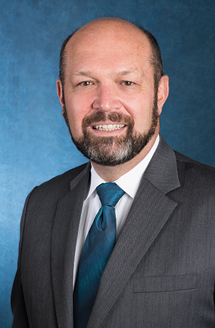October 2016—I had been looking forward to Cancer Biomarkers Conference II at Houston Methodist Hospital, even though early September wasn’t the best time to travel. Work was busy and CAP16 was only two weeks away.

Richard C. Friedberg, MD, PhD
During the weekend meeting, I rediscovered the value of stepping back from business as usual. The program was fast-paced and stimulating, and I learned a lot. Even the nonpathologists I met clearly appreciated what I shared about how much pathologists do to facilitate the adoption of these new diagnostic tools.
It is human nature to nest in our silos; we are more comfortable when the landscape is familiar and largely predictable. However, even the most engaging routine is still a routine. False comfort can easily lead to a complacency that is toxic to constructive steps that foster progress.
I was reminded during the conference how energizing it can be to get uncomfortable, to immerse in the company of those pushing the science forward. The Cancer Biomarkers Conference, with its broad representation from the many angles of cancer diagnosis and management, expanded my understanding of what cancer biomarkers look like, how they behave, what they can do. That will make me a more effective translator when I am called upon to talk about our value and where we fit in.
Some of the best pathologists I know would say that talking never feels like their job, that their sole role is to focus intensely on making the diagnosis. I respect that position; it was true for a long time. However, as the context of care continues to evolve, our role in it must follow suit. While getting it right as physicians is what we do, creative thinking is what we do as well. The continuing emphasis on patient safety requires that we help the growing population of nonphysician health care professionals (“midlevel providers”) to perform optimally when they are asked to step up.
For example, the pathologist is responsible for specimen management in the preanalytic and postanalytic phases. We know better than anyone what affects our processes. That knowledge confers a duty to amplify our messaging about the quality impact of specimen degradation in the preanalytic phase. It also creates a duty to talk about potential threats to patient safety should a diagnostic report be misinterpreted down the line.
If there is a hiccup in the chain of custody for a specimen en route to the laboratory or in postanalytic messaging with midlevel providers, our perceived value to patient care could plummet. Some pathologists will say that supervising clinical support staff is not their job, but it’s always been our job to keep patients safe, and keeping them safe means anticipating, articulating, and responding to the prevailing threats. The demands of our time are the demands of our time. It’s no longer enough for us to know what we are doing; we must help others know what they are doing as well.
Many of us are working with more midlevel providers. While many nurses and physician assistants welcome new opportunities, not all signed on for more responsibility and few really understand how much they may need to learn. We can boost their effectiveness by using familiar terms to describe our procedures and their responsibilities. We can encourage members of our staffs to explain why laboratory procedure is structured so precisely. None of us should feel that fostering a colleague’s understanding of what we do for patients and why we do it that way is someone else’s job.
That brings me to something that many of us feel we’re too busy to think about: making our forms and reports more user-friendly. Good communication is not so much knowledge as it is discipline. It’s making a habit of taking the time to identify what others need to know and boiling it down so the meaning is clear. For example, I don’t know of anyone who adopted a synoptic reporting format and then decided to return to a narrative report. Synoptic reporting boosts our value to the system, makes our clinical partners’ jobs easier, and mitigates the risk of misinterpretation. Synoptic reports make it easier to integrate pathology findings in the electronic medical record. In so doing, they telegraph respect for those who care for patients at the bedside and ease interface with regulatory agencies and registries.
We can also boost our standing with clinical and administrative partners by refining and reformatting laboratory test order forms. The laboratory team will benefit enormously when random “shotgun” orders become a thing of the past. Unnecessary tests consume resources. Necessary tests preserve them. The right dollars spent in the right spots can save far more dollars from being spent in the wrong spots. We can easily enumerate the ways to our administrative teams.
My third suggestion to improve communication with nonpathologists may or may not be the most challenging, but it could become the most valued. I believe more pathologists should think about providing a supplemental streamlined abstract of the pathology report for patients, midlevel providers, and other nonpathologists. I was thinking about this before Cancer Biomarkers II but that experience drove it home.
Relationships falter—and care can suffer—when we become stuck in our specialized vocabularies. As the biomarker presentations progressed, covering nearly every organ system and tumor site, speakers and slides put the lexicon in context. From the start, the organizers and the 27 faculty—along with course directors Eric Bernicker, MD, Philip Cagle, MD, and Randall Olsen, MD, PhD, and co-directors Stanley R. Hamilton, MD, Lynette M. Sholl, MD, and Peter Yu, MD—did their best to demystify cancer biomarker testing. Whether speeding through 100 slides in 30 minutes or lingering after lunch to continue a discussion, directors and faculty sent a message of accessibility, enthusiasm, and respect. And they made it look easy.
[hr]
Dr. Friedberg welcomes communication from CAP members. Write to him at president@cap.org.